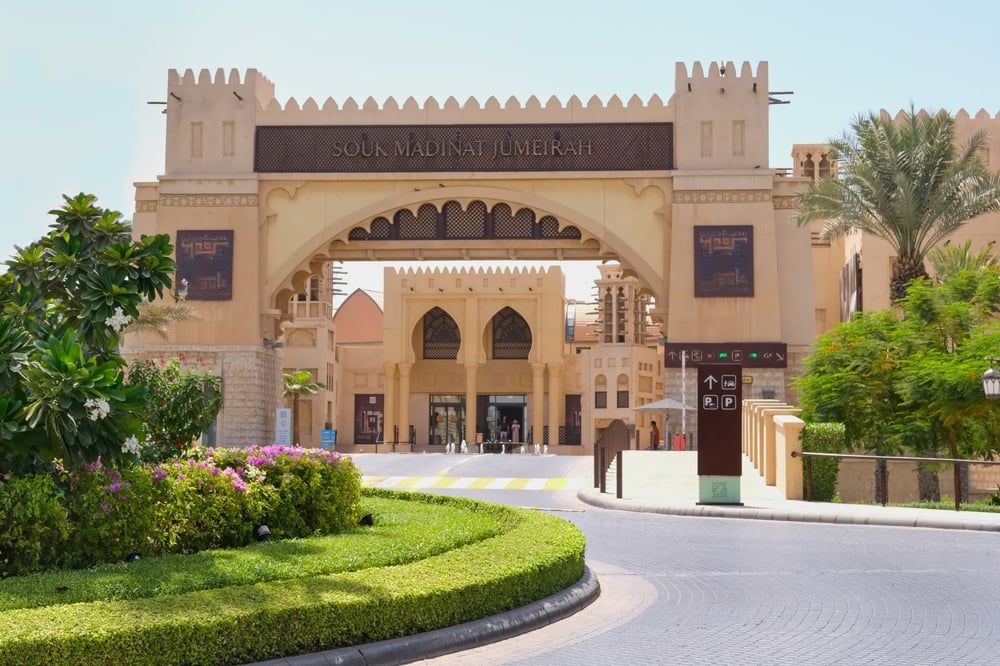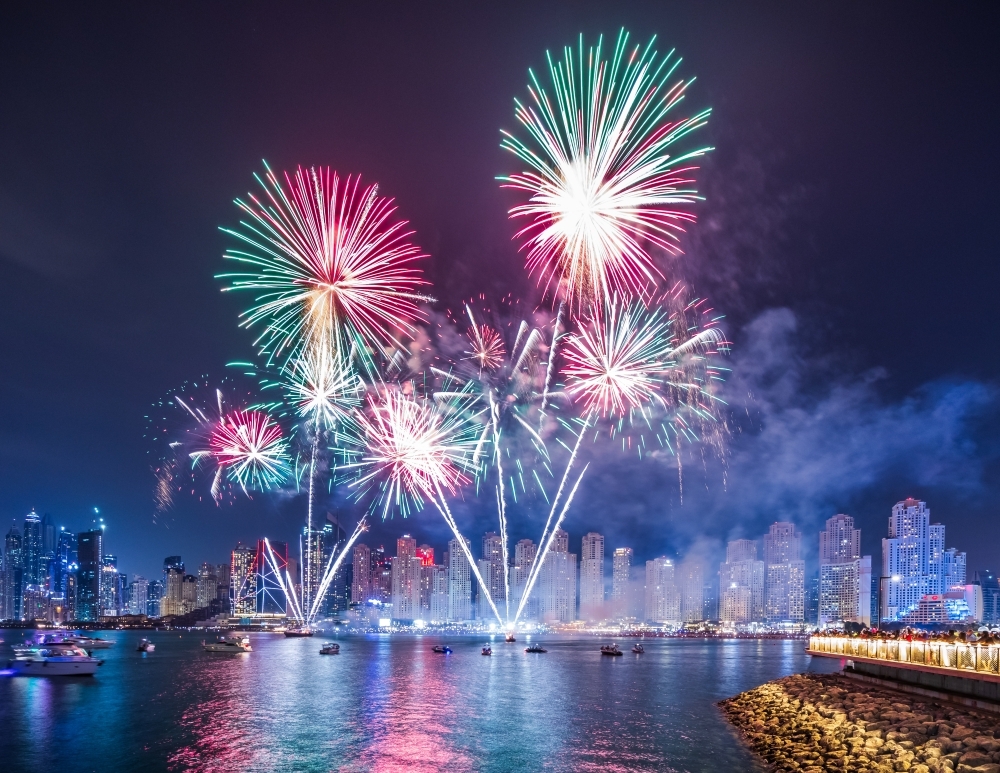Souk Madinat Jumeirah
In a city that prides itself on building the future, Souk Madinat Jumeirah represents something entirely different – a carefully crafted journey into the past that somehow feels more evocative than many actual historical markets. This isn’t renovation or restoration; it’s recreation on an extraordinary scale, where traditional Arabian architecture complements contemporary luxury expectations in ways that shouldn’t work but do.
The souk opened in 2004 as part of the Madinat Jumeirah resort complex, but calling it a shopping centre misses the point entirely. Spread across 75,000 square metres of interconnected walkways, waterways, and courtyards, it presents one of the most ambitious attempts anywhere to reinterpret traditional Middle Eastern market culture within a modern luxury framework. The result is something unique – a place where heritage tourism, shopping, and genuine cultural experience intersect.

Architectural Authenticity in an Artificial Age
The challenge facing the designers was interesting to say the least: create a traditional Arabian souk that would satisfy international visitors’ expectations of authenticity while meeting the service and comfort standards that Dubai’s luxury market demands. The solution involved studying historical Emirati and wider Arabian architecture, then rebuilding it using traditional materials and construction techniques alongside modern infrastructure.
The wind towers that dominate the skyline aren’t decorative – they function exactly as their historical counterparts did, channeling air through the walkways to create natural cooling that reduces the need for air conditioning. The narrow alleyways that wind between shops follow traditional souk layouts designed to provide shade and encourage browsing. The central courtyard areas mirror the gathering spaces that formed the social heart of historical markets.
What’s remarkable is the attention to aging details. The walls show deliberate weathering, the wooden screens carry the patina of decades, and the stone pathways are worn smooth patterns that suggest generations of foot traffic. This artificial process must have involved craftsmen from Morocco, Syria, and local Emirati artisans working together to create surfaces that feel genuinely historical rather than freshly constructed.
Also Read: Restaurants in Jumeirah Islands
A Market That Works
Beyond the architectural achievement, Souk Madinat Jumeirah functions as a marketplace in ways that many heritage recreations don’t. The 75 shops range from carpet dealers and traditional perfume blenders to contemporary boutiques and art galleries, creating a retail mix that serves both cultural curiosity and practical shopping needs. The traditional craft vendors represent the souk’s most authentic element.
The spice and textile sections capture the sensory experience that makes traditional souks memorable. The air carries the complex fragrances of cardamom, saffron, and rose water, while the play of light and shadow through traditional screens creates the atmosphere that distinguishes souk shopping from mall retail. Bargaining remains expected and respected, though pricing reflects the upscale setting and international clientele.
Also Read: Jumeirah Island Club
Waterways and Wandering
The souk’s most distinctive feature is its integration with Madinat Jumeirah’s waterway system. Traditional abra boats carry visitors through canals that wind between the market areas and connect to the resort’s hotels and restaurants. These aren’t mere transport – they provide perspective on the architecture and create natural breaks in the shopping experience that mirror how traditional markets functioned as social spaces rather than pure retail environments.
As the boats glide past palm-shaded walkways and sandstone facades, glimpses of the Burj Al Arab rise in the distance – a visual reminder of how Souk Madinat bridges the past and the future in a single frame.
The waterways serve practical purposes as well. They provide natural cooling through evaporation, create reflective surfaces that enhance the lighting throughout the souk, and establish different zones within the complex that feel distinct despite being interconnected. During evening hours, lanterns reflect off the water surfaces, creating an ambience that transforms the shopping experience into something closer to evening entertainment.
Navigation requires accepting a certain amount of deliberate disorientation. Like traditional souks, the layout encourages discovery rather than efficiency. The pathways loop and branch in ways that reveal new sections and hidden courtyards. Multiple levels connected by traditional staircases create vertical variety that prevents the space from feeling flat or predictable.
Also Read: Jumeirah Golf Estates Gym
Dining Between Cultures
Dining at Souk Madinat Jumeirah reflects its architecture – a thoughtful mix of cultural homage and modern comfort. Traditional Arabic restaurants serve authentic regional cuisine in settings that recreate historical dining experiences, complete with floor seating, old serving methods, and entertainment that includes live oud music and traditional dance performances.
International restaurants occupy spaces designed as traditional merchant houses, creating intimate dining environments that feel removed from the busy market activity whilst remaining connected to the overall vibe. The outdoor terraces overlooking the waterways provide Gulf views and sea breezes that make dining comfortable even during Dubai’s warmer months.
The café culture deserves particular mention. Traditional Arabic coffee houses serve qahwa and dates in authentic settings. These spaces function as wholesome social gathering points for both visitors and Dubai residents who appreciate environments that offer alternatives to the city’s predominant mall and hotel culture.
Also Read: Schools in Jumeirah Golf Estates
Cultural Bridge Building
For Dubai’s international resident community, Souk Madinat Jumeirah is an accessible introduction to regional culture and traditions. The environment feels safe and familiar, providing genuine cultural education through architecture, crafts, and social interactions that might feel intimidating in more traditional settings.
The souk regularly hosts cultural events that go beyond tourist entertainment. Traditional craft workshops teach visitors about regional artistic traditions. Cultural festivals celebrate Emirati heritage alongside broader Arabian and Islamic traditions. These programmes create opportunities for meaningful cultural exchange that serve Dubai’s broader goals of understanding and appreciation.
Also Read: Best Cafe in Jumeirah
Luxury Heritage Tourism
Souk Madinat Jumeirah proves that heritage recreation, when executed with sufficient care and cultural sensitivity, can create valuable cultural experiences that serve both preservation and tourism goals.
Here, the smell of oud, the sound of water lapping against abra hulls, and the glow of lanterns combine into a setting that feels both imagined and deeply familiar – a reminder that storytelling and place-making can co-exist. It’s the kind of setting where a wander through shaded alleyways ends with saffron tea at a canal-side café, and the past feels not just remembered, but relived.



